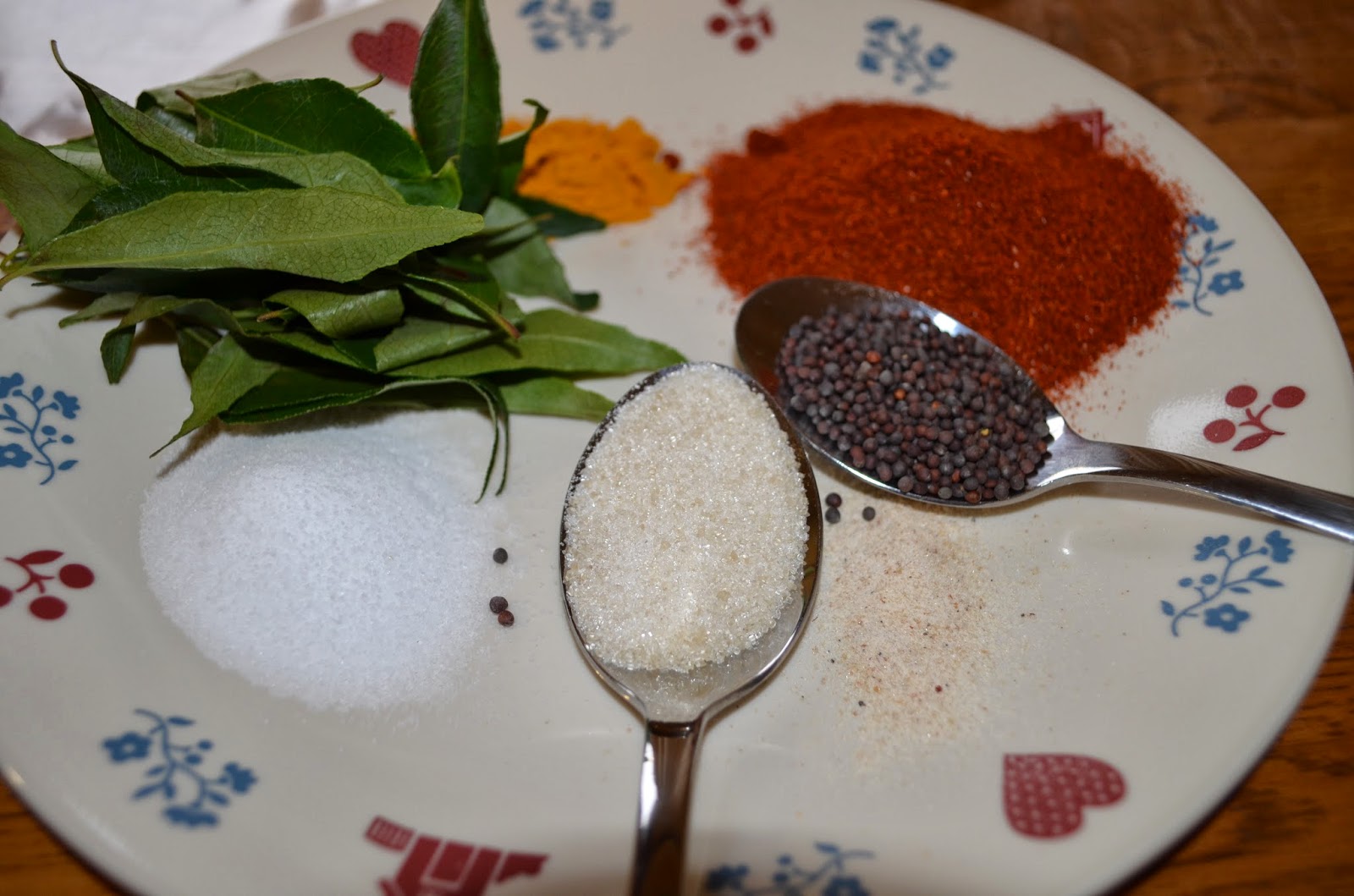The Journey
One of the classic elements in a TamBram refrigerator or pantry is "Thokku" or Relish. Simply stated Thokku is a spicy chutney made with a grated vegetable or fruit, best for mixing with rice or as an accompaniment to yogurt rice or breads. The preparation and the nature of the ingredients naturally extends the shelf life of Thokku, especially when refrigerated. Given my spicy palette, I always had a penchant for this relish and growing up, the thought of yogurt rice without some thokku was unimaginable. The combination of anything sour and spicy has the "spontaneous and uncontrolled drool effect" on me - guaranteed! The quintessential TamBram thokku/relish is Raw Mango aka Manga Thokku (don't be fooled by the sweetened chutney versions of this in the US). One of my other favorites is Tomato Thokku - relish made from tomatoes. Another classic known to many Tam Brams and the holy grail of South Indian flavored rice is Puliyogare (Tamarind Rice). This is made with cooked rice mixed with Pulikkachhal/Tamarind relish cooked to perfection with spices. The Vishnu temples in South India usually offer this Rice dish dish as an offering to the devotees. Why am I writing about this..you may wonder..Here's why. Cranberry is a very close but more healthier cousin of Tamarind and can be easily substituted for Tamarind in select Indian recipes and the Thokku recipe of Cranberry comes close to Pulikacchal in taste. It is readily available in plenty in the fall and winter months in American groceries and the health benefice make it hard to ignore. You might be thinking that I am a genius for figuring this out, but the credit really goes to my mother in law - another TamBramTwist-er in my family! The next time you see cranberry in the supermarket aisle, don't walk past it. If you are working on a ThanksGiving feast, try this recipe. I am drooling as I am typing this up...and you will too once you make this. Keep lots towels handy!The Ingredients
1 tsp mustard seeds
1/2 tsp asafetida
1 tsp sugar
1 tsp salt
2 tsp chilly powder
4 tsp of sesame oil or gingerly oil
1/2 tsp turmeric powder
Let's get cooking..
Heat the sesame oil in a pan. After a few minutes, add the mustard seeds. Order does matter for the best taste.
When they splutter, add the curry leaves. Take a few steps back as the curry leaves tend to splutter and fight back at you.

After a few seconds, add asafetida, salt, sugar and turmeric. A word on the addition of sugar - adding sugar to anything sour brings out the flavors better. I generally apply this rule to cranberries and tamarind. Adding sugar to something sour is like adding a flavor boost...like adding coffee to chocolate.

Stir for a couple seconds until it looks caramelly brown in color.

Add the fresh cranberry. Stir and fold in the spices, but never never poke or crumble the cranberries (I can literally hear my mother in law say this). I don't think she has emphasized anything more in this recipe except the request to handle the cranberries with care! So please be nice to her and the cranberries and treat them gently.

Continue to fold every couple minutes and drool (away from the pan) for 15 more minutes. As they cook, the cranberries will pop. Don't be alarmed. Allizwell :) !
 |
| In 10 minutes, see some have peeled and the popping is continuous. |
In about 15-20 minutes, most of the cranberry will have bursted and formed a mush consistency. The time really depends on the cranberries. So go for the consistency rather than time to know when this is ready. The volume will be reduced in half from when you added the fresh cranberries.
 |
| In 12-15 minutes, most of the cranberry has popped but we are not there yet.. |
I do not recommend blending this as it tastes fine as is. But if you want a smooth puree, go ahead and blend coarsely.
 |
| In 15-20 minutes |
The Cranberry Relish is drool ready. This stores well in the refrigerator for months.

The Good in this recipe
Cranberry
Unique,
wild and natural by habitat, cranberries are rich in phyto-nutrients (naturally
derived plant compounds), particularly proanthocyanidin antioxidants,
which are essential for all-round wellness. The berries are indeed containing
numerous chemical substances that may offer protection from tooth cavities,
urinary tract infection, and inflammatory diseases. The berries prevent plaque
formation on the tooth surface by interfering with the ability of another
gram-negative bacterium, Streptococcus mutans, to stick to the
surface. It thus helps prevent the development of cavities in a way similar to
the action in preventing urinary tract infections. In addition, the
berries are an also good source of many vitamins like vitamin C, vitamin A,
ß-carotene, lutein, zea-xanthin, and folate and minerals like potassium, and
manganese.
Sesame Oil
Ancient Chinese and Ayurvedic practitioners utilized sesame
oil to combat a variety of inflammatory, infectious and cancer causing
processes. Sesame oil is believed to relieve pain syndromes such as tendonitis,
bursitis, arthritis, colitis, irritable bowel syndrome and GERD.

